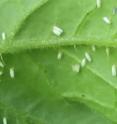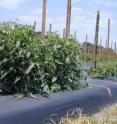Defending food crops: Whitefly experimentation to prevent contamination of agriculture
On November 8th, JoVE, the Journal of Visualized Experiments, will introduce a new technique to aid in the development of defenses against diseases threatening food crops worldwide. The method, published under the title Transmitting Plant Viruses Using Whiteflies, is applicable to such at-risk crops as tomatoes and common bean plants. The whitefly method provides a means of interfering with the plant-contamination process as well as the cultivation of plants that are altogether resistant to infection. "For example, the described technique is used to develop tomatoes with resistance to tomato yellow leaf curl virus, which is a big problem in tomato production in the southern U.S. and in many parts of the world," said Jane Polston, the principle investigator at the University of Florida's Department of Plant Pathology. In the article accompanying their JoVE video, Polston and her colleagues write that numerous genera of whitefly-transmitted plant viruses (such as Begomovirus, Carlavirus, Crinivirus, Ipomovirus, Torradovirus) are part of an emerging and economically significant group of pathogens affecting important food and fiber crops.
The technique includes reliably rearing whiteflies with a specific virus while omitting the possibility of cross-contamination to other viruses -- an easily encountered problem because of the sheer number of whiteflies used in testing. Such contamination would jeopardize the results of an entire experiment. After exposing large numbers of a particular plant species to a specific whitefly-transmitted virus, a researcher can then note which individual plants resisted infection and why. This article outlines how to generate hundreds or thousands of infected plants year-round by exposing them to whiteflies each week. Therefore, the whitefly-assisted transmission method provides researchers with a powerful means for continued experimentation in developing plant defenses against the threat of whitefly-transmitted disease.
Polston said that she published this technique through JoVE's video format because it was difficult to explain it through traditional text-only journals. "I have never published like this before and wanted to try it," she said, "And it was very difficult to describe some of the details of this technique in writing. Video was a better approach."
Source: Journal of Visualized Experiments (JOVE)
Other sources
- Defending food crops: Whitefly experimentation to prevent contamination of agriculturefrom Science DailyFri, 8 Nov 2013, 16:00:47 UTC
- Defending food crops: Whitefly experimentation to prevent contamination of agriculturefrom PhysorgFri, 8 Nov 2013, 15:00:50 UTC
- Defending Food Crops: Whitefly Experimentation to Prevent Contamination of Agriculturefrom Newswise - ScinewsFri, 8 Nov 2013, 14:30:51 UTC

